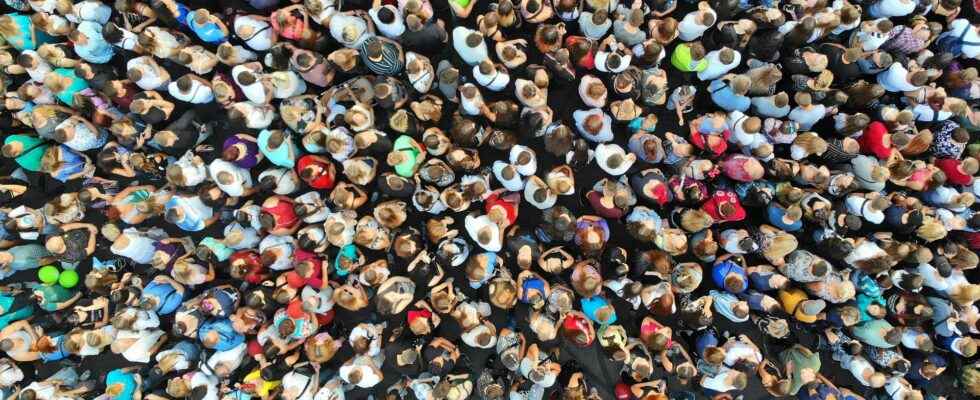You will also be interested
[EN VIDÉO] Is the world written in mathematical language? Nature is a book written in mathematical language, whose letters are triangles, circles and other geometric figures, according to Galileo. While practical and effective in explaining phenomena, math is not all powerful.
In the midst of festival-goers who celebrated the various extreme forms of music, scientists from Inria (National Institute for Research in Science and Technology of digital) were present with a completely different purpose: to study crowd movements. Part of the research project CrowdDNA, which aims to prevent extreme excesses during large gatherings, they mingled with the crowd and participated, like festival-goers, in concerts. The timing was perfect: this year, the festival was spread over seven days, instead of the traditional three, in order to catch up with the two missed editions of 2020 and 2021.
Researchers riddled with sensors mixed in with the crowd
During concerts, specific movements occur, often particular to styles of music present at Hellfest. ” We know that there are dances linked to the music listened to where physical interactions will occur between individuals.explained to AFP Julien Pettré, researcher at Inria de reindeer. the circlepit, where participants run in a large circle, the wall of death, where the participants split into two parts, forming a pit between them, then charging into it, but also the pogo and the mosh, where participants dance while jumping and jostling each other. Finally, some festival-goers were carried by the crowdelongated: this is called the slams.
Among the crowd, the guinea pig researchers mingled, dressed in sensor-riddled combinations. Their role was to follow the various movements of the crowd, whether entering or leaving the festival (which brought together around 60,000 people each day, nearly 80,000 on Sunday for the Metallica concert), or the various dances during the concerts. They were dressed in an orange cap, clearly visible and identifiable by cameras. In addition to the researchers mingling with the festival-goers, others remained behind the two main stages during the seven days, recording the movements of the guinea pig researchers. The team also had access to live footage of one of the scenes, the Warzone.
Modeling the crowd to avoid fatalities
Eventually, the videos mixed with the data collected by the researchers will allow the team to improve their modeling of these characteristic crowds. Because that is the purpose of CrowdDNA, the project in which the researchers present at the festival participate Hellfest. The idea of the project is to develop a modeling method that is reliable enough to prevent accidentsranging from a few injuries to several deaths, as during the concert by Travis Scott in November 2021 which killed ten people. But contrary to what one might think, it’s not just concerts or festivals that are the deadliest, football matches and religious gatherings are just as dangerous: the deadliest took place in 2015 in Mecca, and caused around 2,300 deaths.
During large gatherings indeed, if the density reaches or exceeds six people per square meter, the movements become collective: they are transmitted from person to person, forming, on a large scale, like waves. When several waves cross, it is the people located at these crossings who toast. Seen from a distance, these movements look like tremors, and have also been called “crowd tremors”.. Accidents then follow: jostling, sometimes cascading falls, and asphyxia. As explained on the website of CrowdDNA, “This is a general problem in the field of crowd science: understanding how the microscopic scales are coupled to the macroscopic scales of crowd behavior”. In addition to participating in events like the Hellfestthe team of CrowdDNA uses tools to simulate a virtual crowd. The project will end in April 2024.
Reading ideas for the summer with Futura?
To celebrate the start of the holidays, we offer you the Mag Futura at the preferential price of 15 € instead of 19 €, i.e. a reduction of 20% !
What is Mag Futura?
- Our first paper journal of more than 200 pages to make science accessible to as many people as possible
- 4 major scientific questions for 2022, from the Earth to the Moon
- Home delivery*
*Special offer valid until July 19. Delivery is made in France (excluding metropolitan France), Switzerland, Belgium.
Interested in what you just read?
